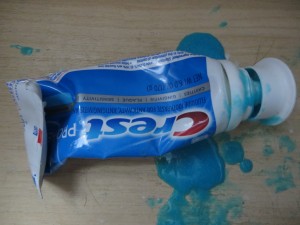Much has been made of the expensive nonsense that was the Chrysler ad in last week’s Super Bowl. What does “more American than America” mean? And is it disingenuous to proclaim “you can’t import American pride” when Chrysler is in fact owned by a German company? What was most troubling to me, however, was the way that Bob Dylan’s most public product endorsement (surprisingly, there been others) turned him from an icon into a pitchman.
The use of Eminem and Clint Eastwood in the two previous Super Bowl spots was brilliant. Eminem didn’t appear till toward the end and he looked like an anonymous and well-dressed young hipster, no visible tattoos, prompting many viewers to say “who’s that?” (The theme of the spot in that dark year, by the way, was “Imported from Detroit,” a direct contradiction to this year’s.) There’s no hiding Clint Eastwood’s voice, but the man himself was in shadows until the very end for the “halftime in America” spot, another piece of brilliant writing and staging.
By contrast, Dylan is in almost every frame of the 2014 spot so it comes to seem like a “you’ve seen him on…” retrospective. It doesn’t deflect the blatantly obvious to have the ironic cut of him flipping through his own albums in a record store. And at the end he does in fact turn to us and come right out and say it: “we will build your car.” And if you act fast, you’ll get a bonus set of floor mats!
Celebrities stand for something beyond their (often tawdry) actual selves. If you pay to put them in your advertising and fail to leverage that aura, you’re shooting yourself in the crankcase. The only exception might be the Ed McMahon/Bob Dole category of commercials used to pitch to an elderly audience, which is believed to have great respect for figures of authority. Come to think of it, Dylan’s actually old enough to join those ranks.
Here are the actual words to the Chrysler Dylan 2:00. Thanks to Mike Wayland, Michigan Live automobile blogger, for providing them so I don’t have to watch the spot over and over again to write them down.
Is there anything more American than America?
‘Cause you can’t import original.
You can’t fake true cool.
You can’t duplicate legacy.
Because what Detroit created was a first
and became an inspiration to the… rest of the world.
Yeah…Detroit made cars. And cars made America
Making the best, making the finest, takes conviction.
And you can’t import, the heart and soul,
of every man and woman working on the line.
You can search the world over for the finer things,
but you won’t find a match for the American road
and the creatures that live on it.
Because we believe in the zoom,
and the roar, and the thrust.
And when it’s made here, it’s made with the one thing
you can’t import from anywhere else. American…Pride.
So let Germany brew your beer,
Let Switzerland make your watch,
Let Asia assemble your phone.
We…will build…your car.
And, here are the Eminem and Eastwood spots in case you to watch and compare.
